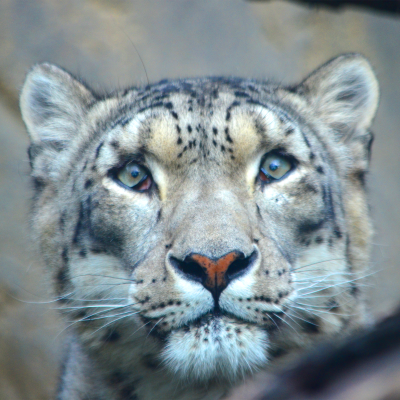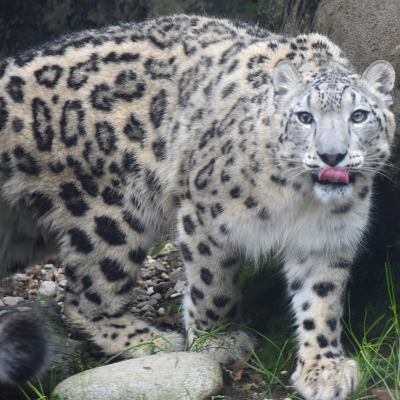About Snow Leopards
Snow leopards are medium-sized cats who adapted to living in cold, mountainous regions. They are covered in thick, smoky-gray fur with gray to black rosettes and spots that help them blend in with the rocky terrain. Their body is about four to five feet long, including a three-foot-long tail. This tail helps with balance and can be wrapped around the body while resting for warmth. Snow leopards have short forelimbs and long hind limbs that increase their agility and large paws with fur on the bottoms, which act as snowshoes. They have a well-developed chest and enlarged nasal cavities which help them breathe in the cold, thin air of their high-altitude habitat.
Snow leopards cannot roar, but they do make other vocalizations such as moans, yowls and “prustens” which are similar to grunts. A snow leopard is able to kill prey three times its weight. They will stalk their prey and spring from a distance of 20 to 50 feet for a kill. They eat very slowly and will stay with the kill to protect it from scavengers such as vultures or ravens. Therefore, they only need to hunt for food about twice a month.
Due to their excellent camouflage, elusive behavior and small numbers, snow leopards are difficult to study and are rarely seen in their native habitat.
Most of what we know about this species comes from research in zoos. We do know that snow leopards are crepuscular, which means they are active during dusk and dawn. However, they may become more active throughout the day in remote regions, or they may become nocturnal in areas where there is a large human population.
These solitary animals protect territories that overlap slightly, and individuals will only come together during the mating season. Despite their solitary nature, male and female pairs have shown high sociability and bonding in zoos.
Snow Leopard at the Akron Zoo
Our snow leopard can be found in the zoo’s Legends of the Wild area.
- Tai Lung - male, born May 26, 2009



